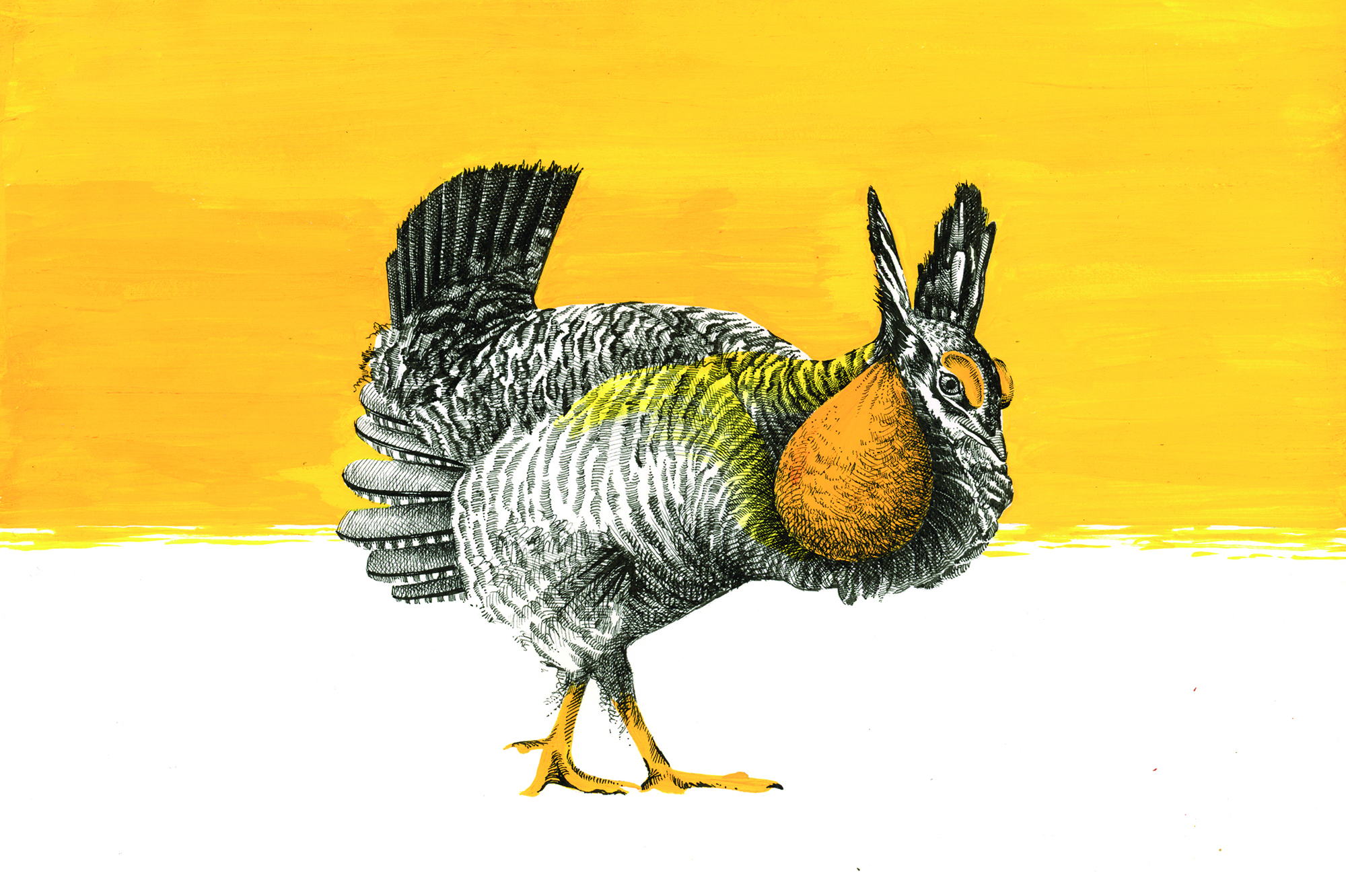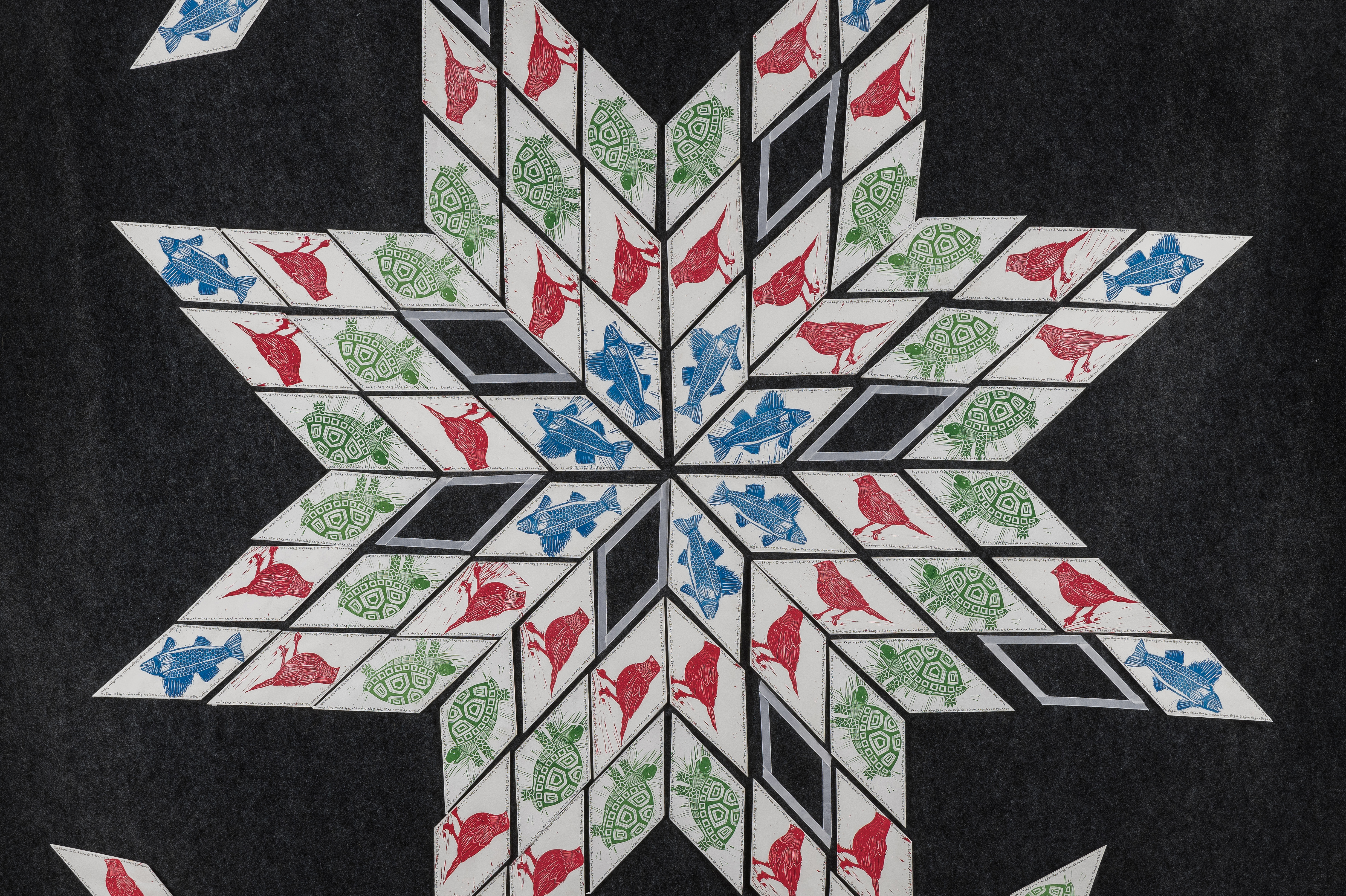Hours
Tuesday–Saturday: 10 a.m. to 5 p.m. | Closed major U.S. holidays, University breaks, and home football game Saturdays | Free admission | 402-472-6220 | Closed April 27 for the Spring Game
Learn more about visiting the museum
BOOK A TOUR
The University of Nebraska is a land-grant institution with campuses and programs on the past, present, and future homelands of the Pawnee, Ponca, Otoe-Missouria, Omaha, Dakota, Lakota, Kaw, Cheyenne, and Arapaho Peoples, as well as those of the relocated Ho-Chunk, Sac and Fox, and Iowa Peoples.

Sarah Kaizar: RARE AIR
January 23–May 4, 2024
This family friendly art exhibition features original gouache and ink artwork from the book RARE AIR: Endangered Birds, Bats, Butterflies, and Bees. Authored by Philadelphia-based illustrator and designer Sarah Kaizar, and featuring writings by A. Scott Meiser, RARE AIR focuses on diminishing flighted species and citizen science. The exhibition, which shares the book’s stories and research, features striking visuals and interactive elements that connect visitors of all ages to the diversity of our ecosystems and the extraordinary creatures that populate them. Kaizar’s work enables audiences to recognize and appreciate the winged species that share our world and offers strategies—big and small—to slow or reverse the threats that face them.
Sarah Kaizar’s work has been seen in regional galleries and museums including the Woodmere Art Museum, Delaware Contemporary, and the Schuylkill Center for Environmental Education. She was a recipient of the 2021 Wind Fellowship by InLiquid and the Dina Wind Foundation, and she completed a residency at the University of Nebraska’s Cedar Point Biological Station in the summer of 2021. Kaizar is also the author of HIKER TRASH: Notes, Sketches + Other Detritus on the Appalachian Trail, an illustrated work based on her experience hiking 2,200 miles from Georgia to Maine. It was published by Mountaineers Books in 2019.
This exhibition was made possible through the generous support of The Puffin Foundation, the Center for Biological Diversity, the Academy of Natural Sciences of Drexel University, Wild Birds Unlimited (Buckingham, PA), the Joseph Robert Foundation, and the University of Nebraska–Lincoln’s School of Natural Resources.
First Friday celebration: Join artist Sarah Kaizar for the First Friday opening of RARE AIR on Feb. 2 from 5-7 p.m. at the Great Plains Art Museum with light refreshments. The first 50 guests will get a free art print from Kaizar.
Feb. 3 bird walk activity: Join Kaizar at Spring Creek Prairie Audubon Center for a nature walk with Center Educator Brady Karg. Guests will join the artist to look for birds, tracks, and more while discussing art, conservation, and appreciation for the winged friends who share our world. This bird walk is free and open to the public, but registration is required.
Above detail: Attwater's Prairie-Chicken, Tympanuchus cupido attwateri, 2021, gouache, pen and ink, on loan courtesy of the artist
Banner: Aplomado Falcon, Falco femoralis, 2021, gouache, pen and ink, on loan courtesy of the artist

(Re)Connected: Elizabeth Rubendall Artist-in-Residence Angela Two Stars
Lower-level gallery
March 1–July 20, 2024
The Great Plains Art Museum’s 2024 Elizabeth Rubendall Artist in Residence is Angela Two Stars, a multidisciplinary visual artist, public artist, and curator. By reconnecting with the Dakota language and her ancestral homelands, Angela Two Stars addresses healing from historical, intergenerational, and personal traumas in her recent work. About this exhibition, she writes: “Through personal, vulnerable installations and performances, (Re)Connected boldly addresses issues that have caused the traumas endured by Native women but also highlights their strength, beauty, and resilience, as well as their roles as leaders, caretakers, life-givers, and protectors of all their relations.”
Angela is the director of All My Relations Arts, a contemporary American Indian art gallery and arts program that is a project of the Native American Community Development Institute in Minneapolis, Minnesota. Angela is an enrolled member of the Sisseton Wahpeton Oyate and received her BFA from Kendall College of Art and Design. Her professional arts career began at All My Relations Arts gallery as an exhibiting artist, which then led to further opportunities, including her first curatorial role for Bring Her Home: Stolen Daughters of Turtle Island, a powerful exhibition highlighting the ongoing epidemic of missing and murdered Indigenous women. Angela's public art graces the shores of Bde Maka Ska in Minnesota and honors the Dakota people of Mni Sota. Her sculpture, Okciyapi, was acquired by the Walker Art Center and is permanently installed in the Minneapolis Sculpture Garden. Angela also has public works installed at the Ordway Center for the Performing Arts, the City of Minneapolis Public Works building, and additional locations throughout the Twin Cities.
Visit the artist during her residency at the museum from April 9 to 13 and June 11 to 15. Learn more about the residency and scheduled events.
Above detail: Almost Fractaled, 2017, Linocuts on fabric


